This article was published in Scientific American’s former blog network and reflects the views of the author, not necessarily those of Scientific American
Welcome to Rio de Janeiro!
-
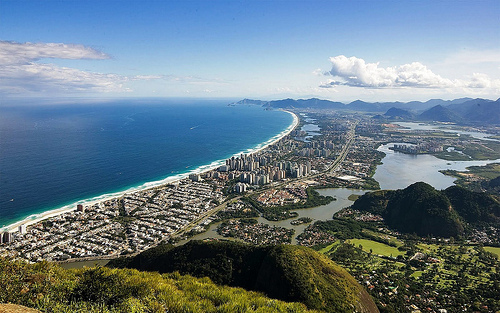
Barra da Tijuca in Rio, where Athletes' Park and Olympic Village were built. Credit: Barrazine Da Barra Flickr (CC BY 2.0)
When you look at it, you know exactly why it's called the Cidade Maravilhosa (Marvelous City): it's absolutely magnificent. When you think of Rio, you probably envision sparkling white beaches washed by sapphire water, with green-cloaked mountains rising tall. Everyone can recognize the iconic Corcovado with its statue of Cristo Redentor, and Sugarloaf Mountain. The tall, conical hills (bornhardts) around the city almost look like a karst landscape, but they're really gneiss. Augen gneiss, to be precise, and the rock is at least 570 million years old.
On supporting science journalism
If you're enjoying this article, consider supporting our award-winning journalism by subscribing. By purchasing a subscription you are helping to ensure the future of impactful stories about the discoveries and ideas shaping our world today.
-
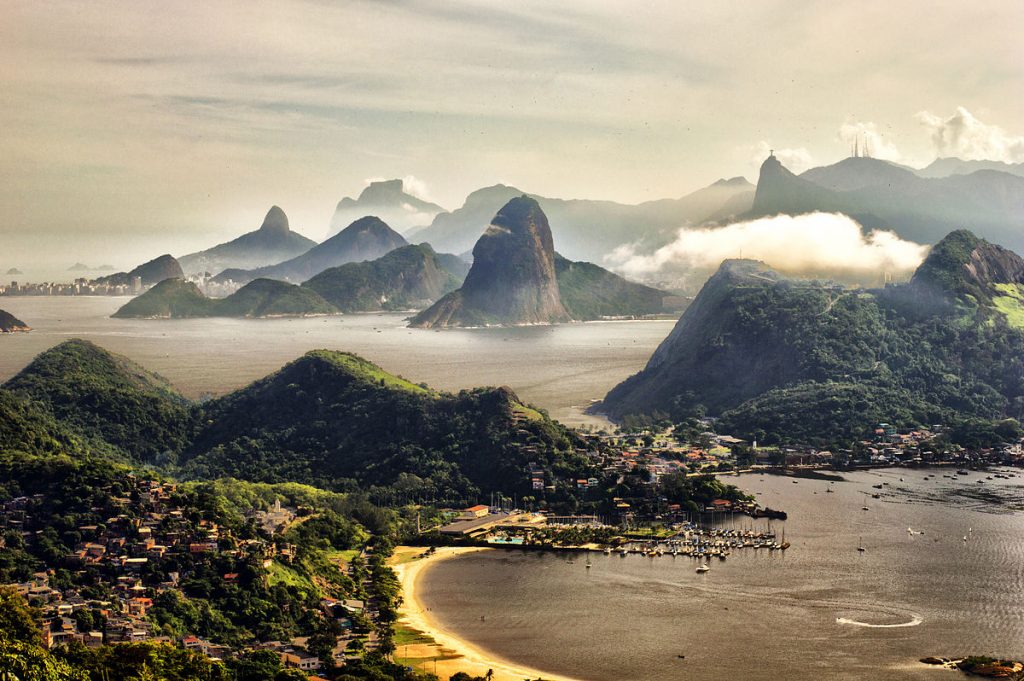
"Rio de Janeiro seen from the City Park, in Niterói." Credit: Leonardo Ferreira Mendes Wikipedia (CC BY-SA 3.0)
Those mountains lead to some unique engineering challenges. You can see that travel in a straight line would be difficult with those super-steep peaks in the way. So the Brazilians have simply gone under. Neighborhoods are connected by tunnels. And when Rio won the bid to host the Olympics, they knew they'd need to add a new subway line. Metro Line 4 faced some tough geology: the new tunnel would run between Ipanema Beach and the lagoon, and had to be cut through three kilometers of sand and soft soils, but also two kilometers of incredibly hard gneiss, with some challenging faulted sections thrown in. This is rock so hard that when Louis Agassiz saw men trying to work it, he said "that the heaviest blows of the diggers produced just a little dust."
Happily, folks in Brazil have been tunneling for well over a century now, and they know how to innovate. They developed a hybrid EPB boring machine that could deal with both the hard rock and the soft ground. They blasted the incredibly hard gneiss with precisely-calculated charges set off with electronic fuses. To avoid damaging buildings, they carefully monitored vibrations with seismometers, .Where buildings were too close to the tunnel mouth to use explosives, they sawed through with diamond wire. All of that innovation and skill allowed them to complete the metro tunnel in plenty of time for the Olympics, without damaging any buildings with the blasting.
-
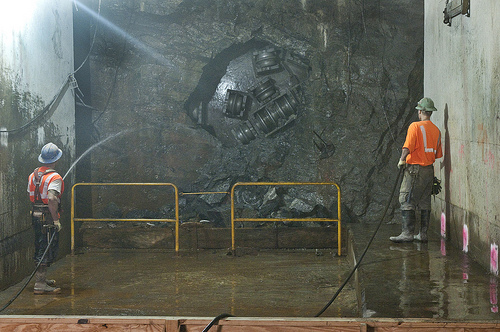
A tunnel boring machine completes a tunnel in New York City. Credit: Patrick Cashin Metropolitan Transportation Authority Flickr (CC BY 2.0)
One of the unique challenges in digging the tunnel was dealing with altered rock. Rio's slum areas don't have sewage systems. Instead, wastewater is dumped straight into the ground, where it actually physically and chemically alters the rock and soil, making it less competent. The also faced zones filled with colluvium, and places where tectonic activity and physical weathering had left the rock severely fractured. Their hybrid machine and tunnel reinforcing techniques were more than capable of dealing with those challenges. And now, with Metro Line 4 open, the Rio Metro system is capable of handling almost a million passengers a year.
-
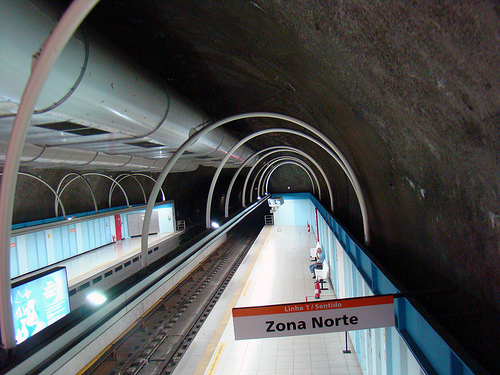
This photo of Metro Line 1 shows the tunnel wall. Line 4 will look much the same. Credit: Rodrigo Soldon Flickr (CC BY 2.0)
Metro Line 4 brings passengers to Atheletes' Park and Olympic Village, which faced some very different design challenges. The clay and sandy soils along the bay and lagoon there are extremely soft and water-logged. They go as deep as 28 meters. Then there are areas covered in peat up to four meters thick and contain around 50-60% organic materials. The water table is super shallow - only about half a meter below the surface. All of that soft, water-logged soil is terrible at bearing weight. You have to drain and compress it before you can build on it, but traditional techniques would take around eight months. The Rio builders needed to complete their projects much sooner. In some places, the soft soils were thin enough to be removed and replaced with sterner stuff, but that wouldn't work where the soft soil went more than a few meters down. So they turned to a relatively new technique called deep radial consolidation. Beneath all of those soft soils, they had a firm layer of sand and gravel strong enough to support injected columns of mortar. Vertical drains were inserted in between the columns. This allowed them to drain and stabilize the soil within just three to five months, and construction on the facilities could go forward on schedule. The results are spectacular.
-
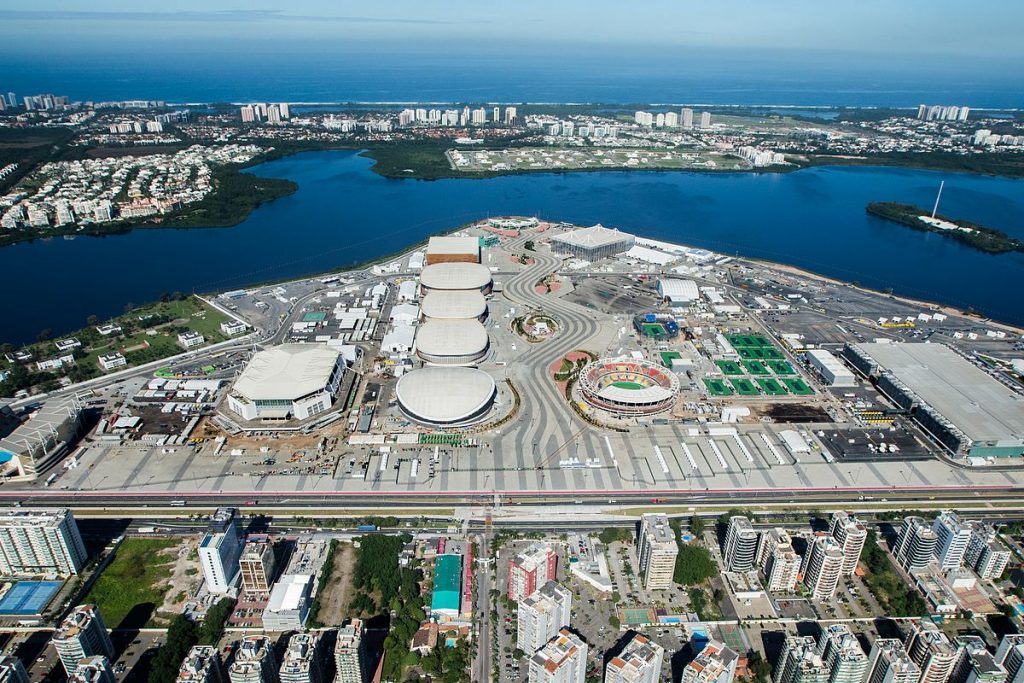
Olympic Park in Barra da Tijuca. Credit: Miriam Jeske Brasil2016.gov.br
Every Olympic construction project requires geologic knowledge and plenty of ingenuity. So lets award some medals to the geologists, architects, and engineers who overcame the challenges and gave the athletes we've been cheering on a place to shine.
References: